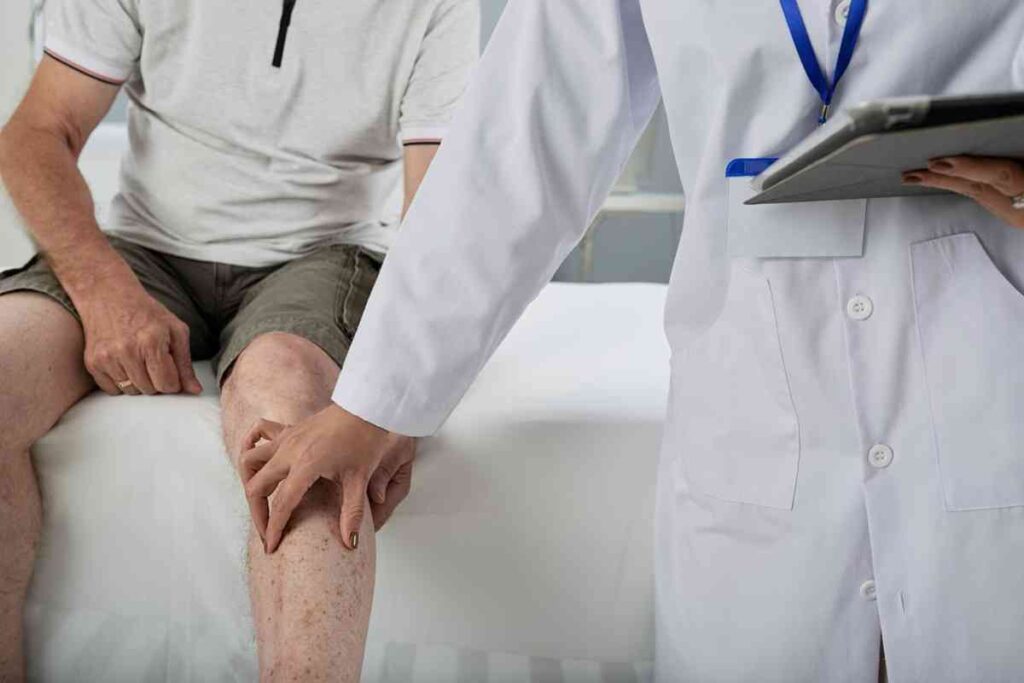Facing joint pain is a common ailment that one can develop at any age. There can be several reasons behind the pain, but with increasing age, one needs to be aware of the consequences and the cause of the joint pain. Commonly, post the age of 50 joint pain can be a sign of Arthritis. Two of the most common types of Arthritis are Rheumatoid Arthritis(RA), Osteoarthritis (OA) and Gout.

Image Source: Freepik.com
Although the symptoms may be similar, there is a major difference between the most commonly found arthritis ailments.
RA is an autoimmune disease that causes one’s body to attack the healthy joint tissue, simultaneously at numerous points. RA symptoms often suddenly flare up, and ultimately lead to mobility issues or joint deformities. Common symptoms faced by patients are morning stiffness, joint pain, difficulty in sleeping and tingling/numbing sensations in your limbs. If unchecked, or if the condition progresses, it can lead to further additional issues, developing in other parts of the body apart from joints.
OA, a degenerative form of Arthritis, is more commonly diagnosed than RA. It is more prevalent in women, especially when they are above the age of 50 and post-menopausal.
Caused by several factors, it causes the joints to slowly break down, causing extreme wear-and-tear, eventually leading to the bones rubbing together, causing swelling, stiffness and pain. OA progresses slowly with increasing age. This can further lead to bone injury, deformation, disability and lack of coordination, among other symptoms.
Caused due to high uric-acid in the blood, Gout affects the body by forming crystals in the joints, leading to flashes of severe pain, mostly in the big toe of the foot. Consuming a purine-rich diet (i.e. red meat & seafood) and excessive alcohol leads to high levels of uric acid in the blood, which, if left unchecked, leads to Gout.
Common symptoms include severe pain in joints, especially the feet (big toe), redness, inflammation and discomfort, leading to mobility issues.
Since there is no definitive way to test for arthritis, the diagnosis is achieved via a combination of methods.
Considering the medical history of a patient is essential in establishing a baseline for the diagnosis. It includes family history and timeline of onset of symptoms.
Done to assess joint function, mobility, deformations, inflammation, joint tenderness, etc to determine the progress of the Arthritis in an individual.
The final testing includes an array of blood tests and imaging tests. In particular, determining Knee arthritis on X-ray is a reliable indicator. Apart from X-ray; Ultrasound, MRI ( Magnetic Resonance Imaging) and Joint Aspiration are some of the imaging tests prescribed for testing, depending on the type of Arthritis in question.
Blood tests like Rheumatoid Factor (RF), anti-Cyclic Citrullinated Peptide (anti-CCP) antibodies, Complete blood count (CBC), Erythrocyte Sedimentation Rate (ESR), Erythrocyte Sedimentation Rate (ESR), C-Reactive Protein (CRP), Uric Acid levels, among others, are conducted depending on the type of Arthritis.
Sant Parmanand Hospital offers the best laboratory services in Delhi, NCR with an excellent Imaging Center.
Living with Arthritis can be painful and discomforting. However, if diagnosed at an early stage, it can be managed, making it easier for a patient to go through even the most menial daily tasks.
The treatment options for Arthritis vary according to the severity of the condition, ranging from medication to surgery to physical therapy.
There are several over-the counter medications available for pain and inflammation, however, consulting the right healthcare provider will help manage the symptoms in a more systematic manner. Sant Parmanand Hospital is one of the best Arthritis treatment hospitals in Delhi-NCR.
Medications for Arthritis commonly include anti-inflammatory drugs, pain medication, Uric Acid-lowering medication, etc, depending on the type and severity of the condition.
Weight-management, exercise, diet and physical therapies are some of the best ways to manage the symptoms of Arthritis. Regular physical activity helps strengthen muscles, reduce stiffness and maintain joint function. Targeted physical therapies are highly recommended as well, since they help reduce pain and improve joint function. Sant Parmanand Hospital is one of the best Arthritis treatment hospitals, offering specialised orthopaedic treatments.
If Arthritis progresses too much, surgical options are often considered as a form of treatment. Sant Parmanand Hospital is the best hospital for robotic knee replacement surgery, offering world-class facilities for Arthritis Treatment. Joint replacement surgeries, Arthroscopy (key-hole surgery) or Joint Fusions are the most preferred forms of surgery, mainly for Osteoarthritis and Rheumatoid Arthritis.
Although there are many factors that contribute to developing Arthritis, it can still be managed, with proper care and awareness. Maintaining a healthy lifestyle, with regular exercise, weight-management and healthy nutrition intake maintains joint and bone health, making us less prone to ailments such as Arthritis. It is always best to consult a doctor if one faces any of the above mentioned symptoms and get the right treatment via early detection.
Arthritis cannot be cured, but certainly can be managed, especially if diagnosed at an early stage.
Arthritis is diagnosed via a combination of methods, including blood tests and imaging tests, like X ray, MRI, ultrasound, etc.
Anybody in the age group of 30-50 can develop symptoms of Arthritis, however, it is more prevalent in individuals above the age 50, especially women.
Managing arthritis includes managing one’s dietary intake. Avoiding red meats (high-purine foods), seafood, alcohol, processed food and sugary drinks are some examples of food items to avoid.
It can be hereditary in some cases. People with a family history of Arthritis are at a higher risk of developing this condition.